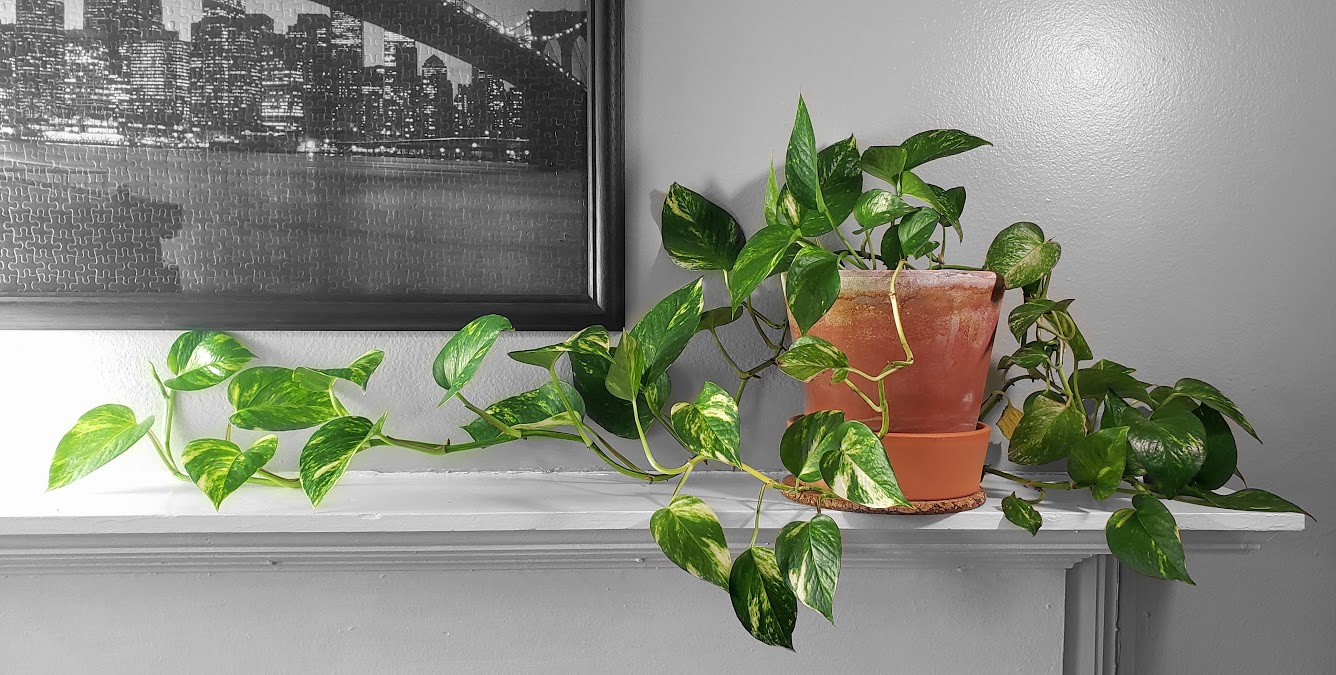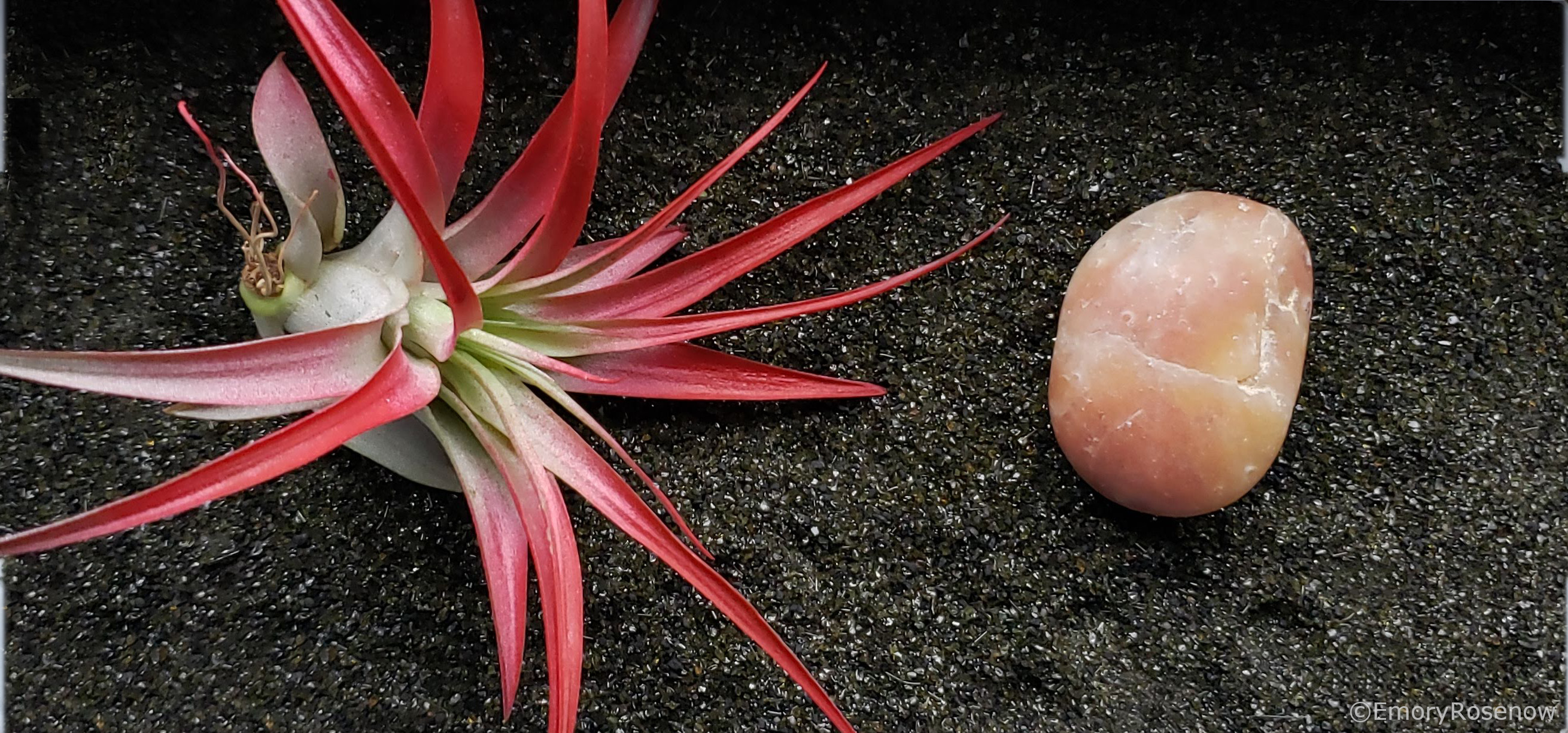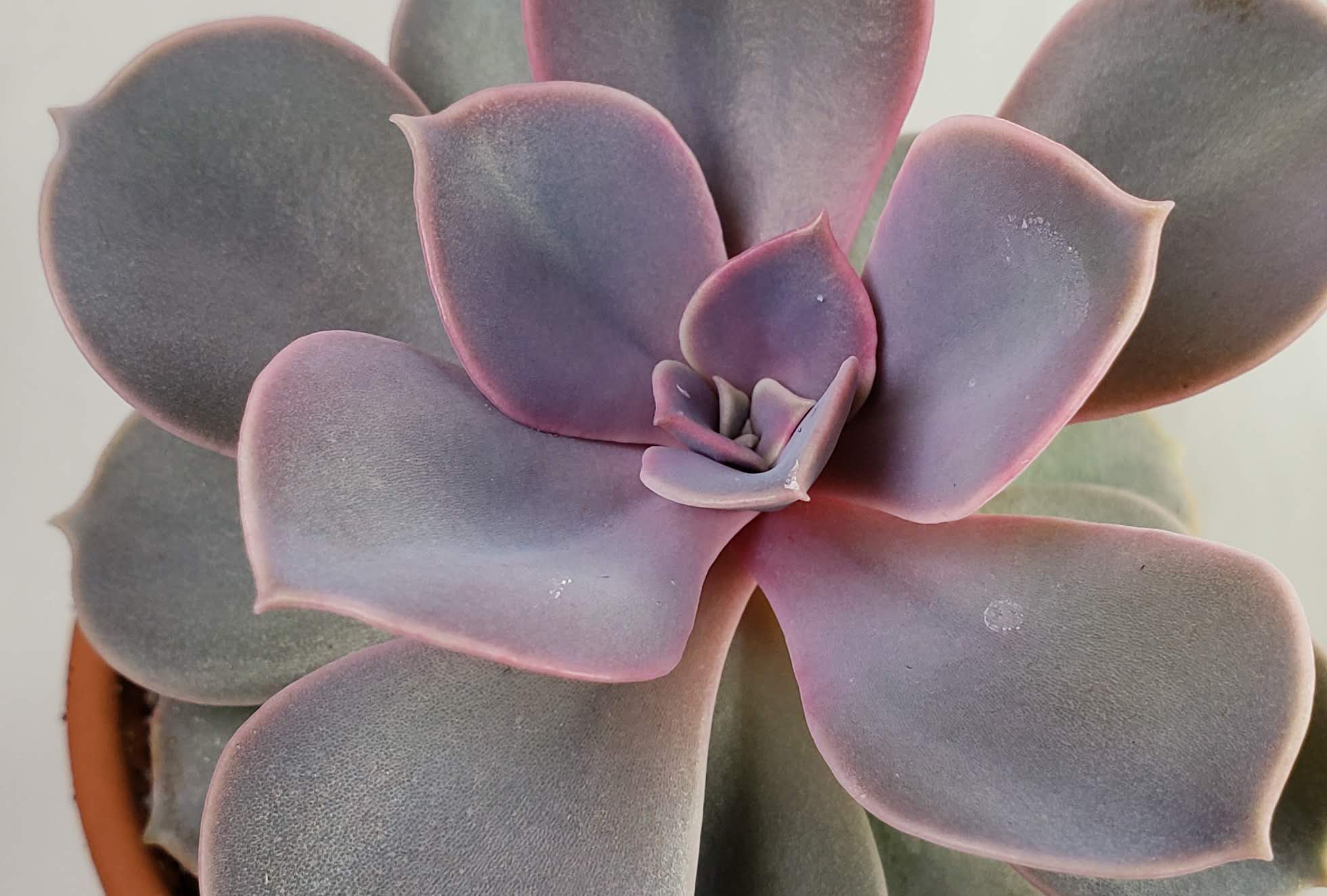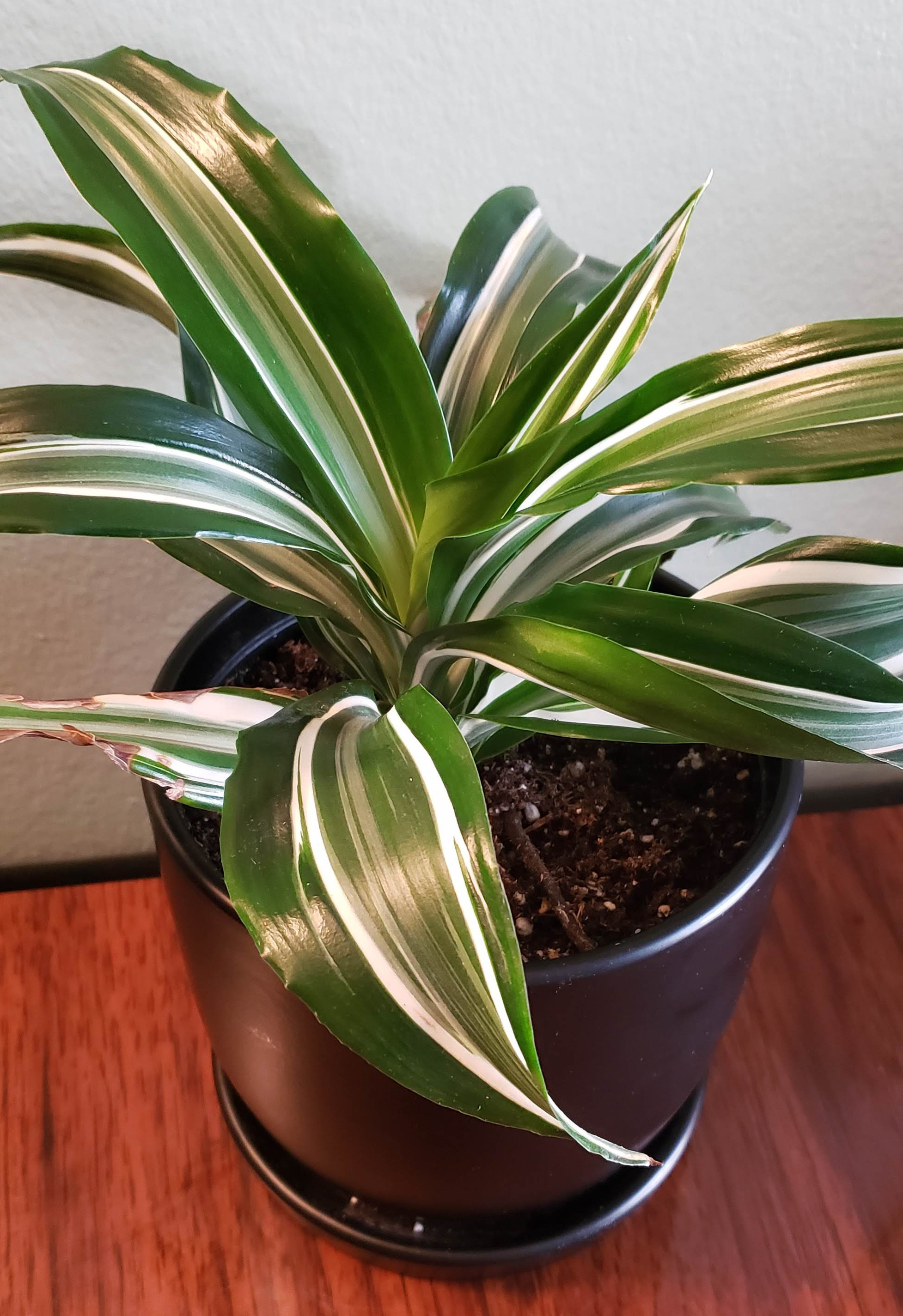Meet Phil, a Golden Pothos! This is a series of plant profiles based on the houseplants in my collection. For each, I’ll take you through some basic plant facts and care information (jump to) based on my research and personal experience!
The Facts
First, the dry stuff. Phil is an Epipremnum aureum, commonly known as a Golden Pothos or Devil’s Ivy. He is native to the island of Mo’orea, part of the Society Islands of French Polynesia (Mo’orea is the nearest neighbor of Tahiti). E. aureum is technically a flowering plant, but is genetically unable to produce flowers without exposure to certain hormones [PDF]. Pothos are on NASA’s list of clean air plants, reportedly removing chemicals such as benzene, formaldehyde, and xylene from the air [PDF].*
Pothos are frequently labeled as Philodendrons in stores, but while they share some similar features and habitat needs, they are not the same. Both are members of the family Araceae, but belong to different genera. Philodendrons are native to tropical regions of the Americas, and do flower without assistance.
The ASPCA lists pothos plants as toxic to cats and dogs.

Propagation and Cultivation
Our pothos Phil was grown from a cutting taken about two years ago from a healthy parent plant. Rooting new pothos from cuttings is super easy! Just lop off a section of vine that includes a rootlet (pictured below) and a couple leaves and stick it in some water, keeping the leaves dry. Make sure you change the water for fresh water occasionally, and keep it in a moderately warm place out of direct sunlight. In a couple weeks it will have grown some awesome new roots, and you can then plant it in soil. EZ PZ.

While pothos are known for their long trailing vines, it’s good to do some light pruning to keep your plant from getting too leggy. Pruning also encourages growth farther up the vine (see picture of root level growth), giving you a bushier looking plant. The long vines that you do have can be trained up a trellis or allowed to spread horizontally.
Care

Now the important stuff. How do you care for a pothos?! I’ve picked Phil as the first plant profile because pothos plants are dead easy to care for. Forgot to water? Eh, whenever you get around to it. Not enough light? Eh, that’s ok. Don’t have plant food? Whatevs. Your pothos will keep hanging out. They’re apparently called “Devil’s Ivy” because they refuse to die, although I’ve got to say that is not the first quality that comes to mind when I think of the devil.
However, if you want your pothos to THRIVE (and of course you do!), here’s the rundown:
- Water: While your pothos will tolerate missed waterings, they do prefer to stay on the moist side of life. Wait until the top inch of soil is dry to keep from overwatering, and use a well-draining soil mix.
- Light: Again, pothos tolerate low light, but they do better in medium to bright indirect light. Full sun will burn the leaves, but they will also begin to lose their variegation (that’s the pretty color variations on the leaves) in low light.
- Temperature: The average yearly temperatures on Mo’orea are between 70°F and 88°F (21°C – 31°C), will almost no seasonal variation. Your pothos will thank you if you keep it at room temperature, no lower than 65°F (18°C).
- Humidity: Pothos are flexible in their humidity needs, but they will generally be happier around the higher end of normal household humidity (50–60%).
- Food: It’s probably best to feed your pothos at least twice per year, spring and fall. However, feeding more will encourage faster growth!
- Container: I have Phil in an unglazed clay pot. It’s on the large size for him, with room to grow, so the lack of glazing helps the soil dry out and keep from getting soggy. Pothos have a relatively small rootball, so a properly sized container made of a lighter material (such as plastic) can be a tipping hazard.
If you live in a tropical climate zone, you can grow pothos outdoors. However, it is considered an invasive species in many of the countries where it has been introduced, so keep it contained.
*See further studies by B. C. Wolverton for more details




